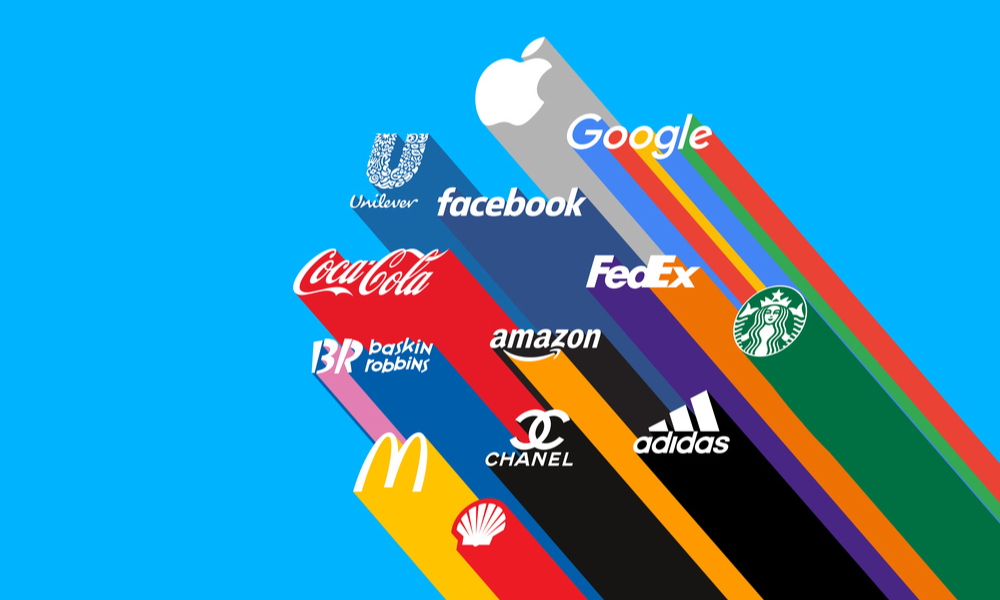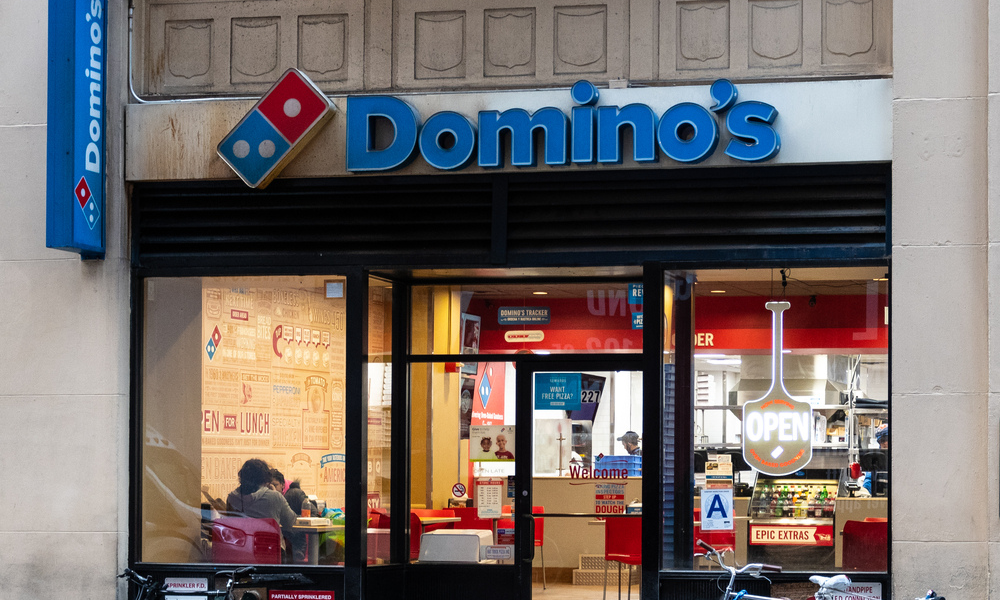Brand Awareness vs. Brand Trust: What’s the Difference?
When you think about marketing, is brand awareness the first thing that springs to mind? It makes...

It may seem crazy.
Every September, crowds of people line up in front of Apple Stores with their tents and sleeping bags to get their hands on the new iPhone. It doesn’t matter that they already have the latest iPhone or that the newer one is practically the same as the old one—plus a few features they’ll probably never use. They will wait in line for 12 hours or more.
This happens almost every year, again and again.But that’s not the most surprising part.
The most surprising thing about all of this is the fact that the people waiting in line are very happy to do so.
Isn’t that every marketer's dream?
Imagine this: people don’t just want your product. They want it so badly that they’re gladly willing to put their lives on hold, maybe for a day, to buy it.
This is an example of a powerful form of brand trust called brand admiration. This term was popularized by C. Whan Park, Deborah J. MacInnis and Andreas B. Eisingerich in their book "Brand Admiration: Building a Business People Love".
In this post, we'll discuss their "3 Es" framework for brand admiration—and how you can work to achieve brand admiration for your brand, too.

Brand admiration is not just about the brand itself. It’s about how customers perceive the brand. A brand that is admired has gained the trust, love, and respect of its customers.
Its customers are more than customers; they are its advocates and its top marketers. They promote the brand’s products to their friends and family, they pay a premium to get those products instead of competing ones, and they gladly wait in line for those products.
If having customers like that is not enough of a reason to put time and effort into cultivating brand admiration, think about some other great benefits that brand admiration brings with it. You'll get better partnership opportunities as admirable brands reap the benefits of having a strong network of suppliers and partners that are often willing to go the extra mile and make sure they stay connected with such a brand.
There will also be better hiring opportunities. If your brand is admired, it will be much easier for you to recruit top talent in your field. And not only that—it will increase employee happiness as employees are proud to be working for an admired brand.
There are many ways to build and enhance brand admiration. In this article, we’ll be discussing the 3 Es framework, developed by Park, MacInnis and Eisingerich. It’s an approach that's simple to understand, modern, and backed by extensive research and data in the fields of brand management and consumer psychology.
Moreover, it can be applied to virtually any industry or brand—including yours.
According to this framework, customers admire brands that enable, entice, and enrich their customers. In other words, they benefit customers in several ways. As a business owner or marketer, you should focus on providing these three forms of benefits to your customers to build brand admiration.
Let’s dive into what each of the three Es means.

Enabling benefits empower customers in their daily lives and help them solve their problems. These benefits take on many forms and are as diverse as the problems that customers run into. These include:
As described in by one of the book's authors:
When a brand consistently enables customers over time, they begin to trust the brand. They know that they can rely on it to solve their functional problems and conserve their scarce resources.
In general, marketers start with the benefits that fall under this category when positioning their brands. That’s a good thing, as a brand’s enabling benefits are usually the easiest ones to advertise.
However, too many marketers stop there—and that's missing out on an opportunity to be more for your customers.

Benefits that entice customers stimulate their minds, senses, and hearts. Whereas enabling benefits are logical and practical, enticing benefits are emotional and tied to customers’ beliefs and perceptions. Enabling benefits make customers feel empowered, but enticing benefits make customers feel gratified.
A brand that provides these enticing benefits makes customers feel gratified, engaged, entertained, upbeat, and warmhearted. Here are some ways for a brand to provide these enticing benefits:
According to the creators of the 3 Es framework: “whereas enabling benefits lead to brand trust, enticing benefits lead to brand love”.
As an important side note: many B2B marketers, in particular, do not give enticing benefits enough attention. Be careful to not make that mistake, because these sorts of benefits are very important, and not only reserved for B2C brands.

Benefits that enrich customers make them feel inspired, proud, connected, validated, and/or influential. Whatever industry you are in, you will likely find this “E” to be the most challenging – but it is equally rewarding.
One of the reasons providing enriching benefits is difficult has to do with the fact that it takes time. The brand itself often needs to develop a reputation over time, for example by:
As a word of warning: note that it can be tricky to reflect on personal beliefs. Just as how people whose beliefs align with a brand are much more likely to do business with it, other people whose beliefs go against those of the brand are much less likely to do business with it. This is especially true when it comes to political stands or controversial topics. So study your audience well before trying to provide such benefits.
According to the pioneers of the 3 Es framework: “Although enabling and enticing benefits build brand admiration through their impact on brand trust and brand love [respectively], enriching benefits have the greatest impact on brand admiration through their impact on brand respect.”

Now that we have a good understanding of the 3 Es, we can put that knowledge to good use. We’ll go over some practical tips which you can start implementing right away to build and enhance brand admiration.
Remember: it’s never too early – or too late – to start.
The most important tip to keep in mind is that the real magic happens when you deliver all 3 Es together. It is much better to be very good in all 3, than to be excellent in just 1 while being below average in the other 2.
Keep this in mind when evaluating your own brand. Ask: “Which of the 3 Es am I delivering to my customers? Which of them can I improve or invest in?” Balance your resources to make sure that you are not lagging in any of them.
As with other robust frameworks, the 3 Es framework practically gives you glasses that you can put on to get a better look at your industry. It tells you which questions to ask, so you can identify opportunities and threats.

It is very important to keep a brand’s words aligned with its actions. A brand’s marketing should clearly communicate its identity, and the actual operations of the company should deliver accordingly.
Suppose a brand's marketing team positions it as a high-end product by enticing customers with innovative product design. However, the brand's production team tries to minimize costs by using cheaper, lower-quality materials that get the job done at a lower price to the customer. This inconsistency is a recipe for distrust.
When a customer is persuaded by an advertisement to buy a "luxury" product and ends up with something of inferior quality, they're understandably upset - especially if they were already willing to pay more for a better product.
Although the above example was very simple, this can happen to even the biggest companies in subtle ways.
When the global economy took a hit in 2008, Domino’s had to do something, especially after they expanded into several countries with new competitors. Prices went up, and they did not want to make their pizzas too expensive.

What did they do? They started looking for ways to cut costs. The people in charge of the dough used slightly lower quality ingredients that would “barely affect the final taste or product”… but so did the people in charge of the sauces, and the people in charge of the spices, and the people in charge of the toppings, etc. When taken together, these resulted in much lower quality pizzas.
While the marketing team was still advertising “delicious”, the production and operations teams were delivering “affordable”. This leads to one of the few things in life which is worse than low-quality pizza – decreased revenue!
The best part is that they started fixing the problem not by improving their production quality – but by aligning their marketing and production. That’s right, they started by admitting that the product really needed improvement, and they then spent millions on doing just that.
To sum it up with the words of the pioneers of “The 3 E’s Framework”: “Marketers create brand trust, love, and respect [i.e. brand admiration] most efficiently when their marketing actions are synergistic; that is, their actions are consistent with the brand’s identity and they complement one another in communicating and delivering the brand identity”.
Looking back at the iPhone example we started with: notice how the people who wait in line do not do so in order to get the new features. They are not replacing some old burner phone that doesn’t have a touch screen for a smartphone that will enhance their daily lives. They are waiting in line to replace the same phone which they waited for in the same line the previous year.
This just goes to show that the iPhone’s features – its enabling benefits – are not the only reason why customers admire it. There’s no doubt that its speed, reliability, and dedication to privacy and security leave customers with no choice but to trust it, but there’s more to the admiration recipe.
The iPhone’s slick design entices their visual senses. In a word, customers love it.
Its history as the first true smartphone enriches them by affirming their belongingness to a group of innovators and creators. Customers respect the iPhone’s roots.
If you put all that together, you’d quickly find out why lining up for hours on end, year after year, to spend over a thousand dollars on a phone that is awfully similar to the one in your pocket is not the least bit surprising. It's because it has earned the admiration of its buyers.

Nader is an attorney and a tech enthusiast. He loves writing and is interested in business and corporations, web 3.0, and finance. In his spare time, he enjoys performing magic and managing his temporary tattoo start-up.

When you think about marketing, is brand awareness the first thing that springs to mind? It makes...

Note: Emmanuel Probst is global lead, brand thought-leadership at Ipsos and an adjunct at the...
Leave a Comment